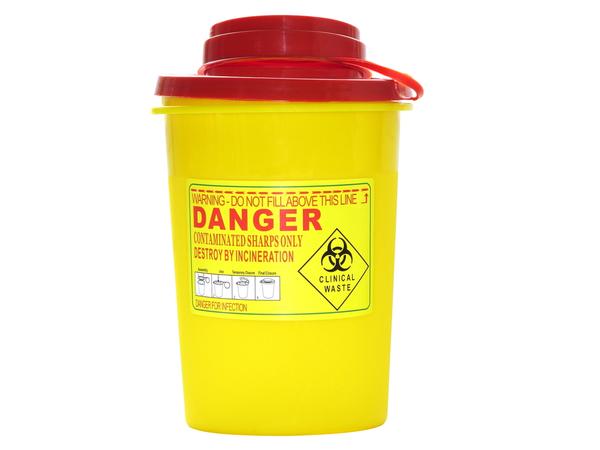During the course of our lives we will almost certainly use medical and healthcare facilities; examples could include hospitals and dentists. To provide the healthcare services these facilities will generate clinical waste which must be disposed of in a safe responsible way. Steam plays an important role in this process, which we will be describing later in this article.
Facilities that generate clinical waste include; dental practices, doctors surgeries, health centres, clinics, vets, hospitals, tattooists, acupuncturists, and chiropodists. Quite a list!
So what is clinical waste? In the UK clinical waste is defined in the Controlled Waste Regulations 1992. It defines this as waste that consists wholly or partly of:
- Syringes, needles or other sharp instruments
- Human or animal tissue
- Blood or bodily fluids
- Excretions
- Drugs or other pharmaceutical products
- Swabs or dressings
The UK Environmental Protection Act of 1990 places people concerned with clinical waste under a duty of care to ensure that the waste is disposed of safely. UK Hazardous healthcare waste is also subject to the requirements of the Hazardous Waste Regulations 2005.
Generally facilities that provide healthcare services are experts in just that, healthcare. The disposal of medical waste is not their core business and is generally contracted out to a clinical waste disposal and collection service provider. The service provider will collect the actual waste which is collected in colour codes bins and transport them to their waste processing facility. The colour coding of bins means that clinical waste is segregated from other waste at source.
The primary methods of treatment and disposal of medical waste are:
- Autoclaving
- Microwave
- Chemical Disinfection
- Incineration
Incineration and autoclaving is the most commonly used, certainly in the UK and therefore the ones we will concentrate on.
Autoclaving
Steam sterilizing or autoclaving is the exposure of waste to saturated steam under pressure in a pressure vessel or autoclave. Steam plays the key role as it is used to obtain a temperature of at least 121 °C. The steam penetrates the waste assuming that it has been loaded properly with an absence of closed containers. The technology does not render waste unrecognizable and does not reduce the waste volume unless a shredder or grinder is added. Clinical waste that is subjected to an autoclave is therefore often also subjected to a compaction process, such as shredding, so that it is no longer recognizable and cannot be reused for other purposes. The compaction process reduces the volume of the treated waste significantly. After treatment and compaction, the treated waste can be combined with general waste and disposed of in traditional manners.
Segregation of the waste before autoclaving to ensure that mercury and other hazardous and volatile compounds are removed must be done. In addition autoclaving is not suitable for the disinfection of body parts and other waste significant masses.
However autoclaves can be used to process up to 90% of clinical waste, and are easily scaled to meet the needs of medical organizations. The disadvantage is that an external steam source i.e. a boiler, or an integrated steam generator is required. This means there is an energy requirement to raise steam for the waste to be processed.
Incineration
The most effective and commonly used method of waste treatment is incineration. Clinical waste incineration is the process whereby the waste is treated thermally, at extreme temperatures, in a controlled environment. High temperatures will destroy most pathogens and chemicals which are often found in this waste.
Incineration reduces organic and combustible waste to inorganic, incombustible matter and results in a very significant reduction of waste volume and weight.
The incineration/pyrolysis should only be carried out in appropriate plants. The system should be designed to cope with the specific characteristics of hazardous clinical waste (high water content, high plastic content). As the following technologies are rather sophisticated only hazardous waste fractions should be burned in these plants. Other healthcare waste which is similar to municipal waste should be segregated in advance and be subject to different waste treatment technologies.
There are many different furnace designs and combustion techniques used in for clinical waste incineration. Generally, incinerators consist of the following components:
- Lidded charge box or feed hopper where the batch is first deposited.
- Hydraulic ram/feeder which pushes the charge into the furnace.
- A pyrolysis furnace where the waste is degassed, releasing moisture and volatile components (at temperatures 800–900 °C).
- An after-burning chamber or secondary combustion chamber where the volatile components and products of incomplete combustion are completely destroyed by thermal oxidation in the presence of excess air, at temperatures above 1 000 °C and with a gas residence time of two seconds.
- Burners to heat up the plant when started, initiate combustion and to regulate the temperature in all parts, especially the secondary combustion chamber.
- Dry, wet or catalytic flue gas cleaning devices.
- A residue handling system.
The role that steam plays is in recovering the heat from the incineration process before the flue gas cleaning section. Steam is generated which can be used in an adjacent hospital or business. Steam is used in hospitals for heating, domestic hot water heating, cooling, sterilising, humidification, and laundry services.
An air cooled heat exchanger is normally used to balance the steam load to the hospital when there are periods of low demand from the hospital. If there is no hospital or business nearby the steam can be put through a steam turbine to generate electricity.

